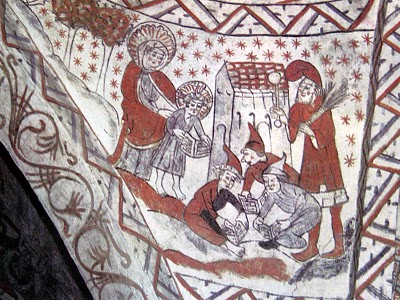Teaching the Middle Ages – in the Middle Ages and today…
What was school like in the Middle Ages? How did children (or un-lettered adolescents) learn anything? What tutorial and didactic instruments were available? And how might knowledge of these matters enrich the teaching in schools and universities anno 2012?
These questions are tackled in the latest issue of “Das Mittelalter” – the journal published by the German Mediävistenverband.
Primarily the issue presents a series of (very interesting) cases about Medieval Teaching, amongst others on the interplay between the praxis of recruiting and teaching youngsters in feudal Champagne compared with the formation of Perceval in the “Conte du Graal” by Chrétien de Troyes. Other articles focus on the use of images in the Cronicles of Matthew Paris or the combination of verses, comments and images in the fencing books of the Later Middle Ages.

As an extra feature the articles are accompanied by teaching material and suggestions. Finally the collection is rounded off with an article by Meike Hensel-Grobe, about the general challenges of teaching Medieval History in Schools. Here she ponders the quandary that on one hand the teaching of Medieval History is more and more reduced in terms of time-slots and resources, while at the same time pupils and people in general have this obsession with the Middle Ages as is witnessed by the proliferation of more and more historical novels, computer-games, films, events and reenactments.
One of the challenges here seems that while the teaching of Medieval History is characterised by an old-fashioned sociological-historical approach (also called the daily-life-approach), children and grown-ups demands stories of active and inventive persons or they wish themselves to be active pursuing different handcrafts. One reason for this is the historical syllabus in schools, which – having been written by modern historians – continues to require in a subtle way that The Middle Ages keeps being taught as a primitive prolegomenon to the “real history” = the history of enlightenment and modernity.
Thus, while popular medieval history is filled with active combatants and participators, the teaching of Medieval History is being fenced off in an “a-historical” reservation.
The solution? Interdisciplinary involvement with other teachers and the world of “living history”, claims Mieke Hensel-Grobe.
Das Mittelalter. Zeitschrift des Mediävistenverbandes. Band 17, 2012, heft 1.
Lehre und Schule im Mittelalter. Mittelalter in Schule und Lehre.
